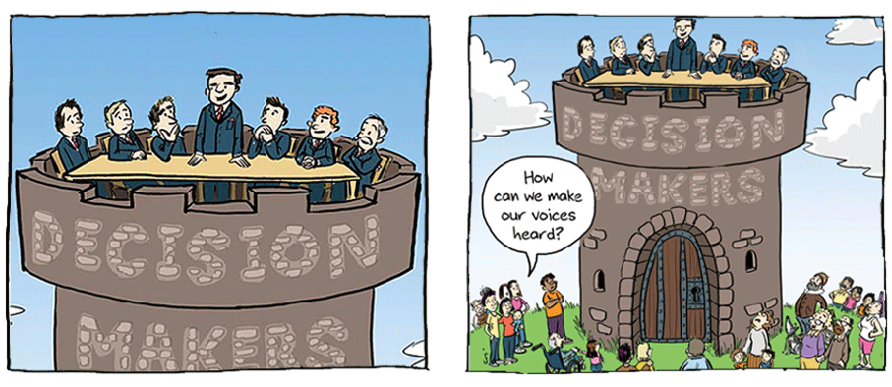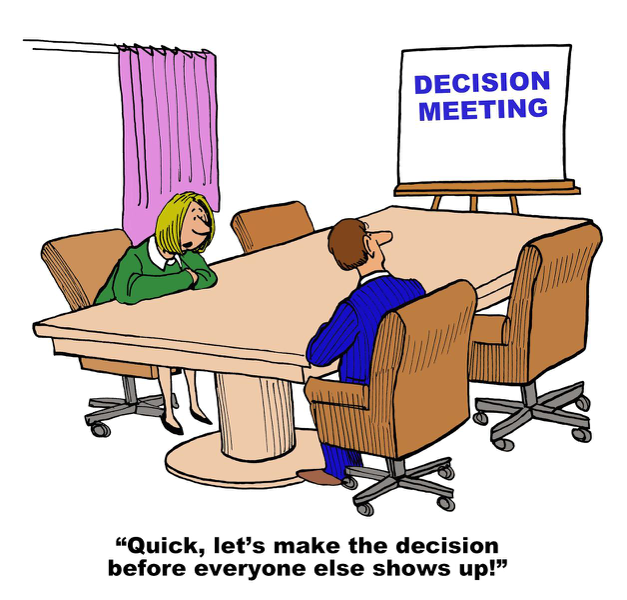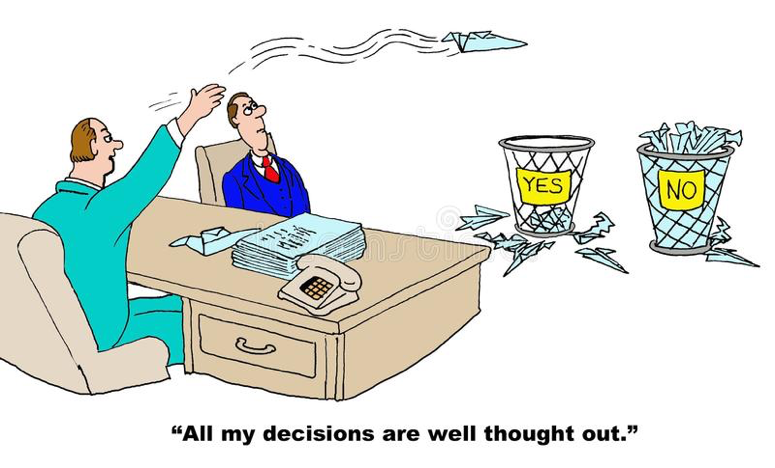Technology analysis: where to start work on the patent landscape

Did you consider the development of the Internet of things technology, machine learning, robotics and cloud computing, through the lens of the forthcoming industrial revolution 4 (Industry 4.0)? Already at the end of 2017, EU regulators noted an increase in the filing of applications for industry 4.0 technologies by 54%. To visualize the picture in this field was introduced the term - patent landscape. In this article, we will consider not only the nature of this definition, but also approaches to the preparation of relevant reporting.
Patent landscapes are visualizations of patent research results. Some use the term patent mapping, but I prefer the landscape. Despite the fact that the compilation of such a landscape is extremely time-consuming and time-consuming exercise, including the analysis of a large amount of patent documentation, it may be required in completely different situations.
For companies, for example, it can be competitor analysis, technology monitoring or information analysis during a merger. With the help of patent landscapes, you can see how the business will develop, the prospect of technology and unexplored niches. This tool can show promising directions and business hazards. And at the state level, he will help in determining the direction of innovation development programs.
In this article, we will look at how to start preparing studies to introduce the patent landscape. Sometimes, when you come across a similar task for the first time, it is difficult to understand everything and you just want to send the topic to outsource and not suffer. However, the preparatory steps still have to be done.
Throughout the process of preparing for the study, and during the study itself (if you do it yourself), answers to the following questions will help:
Who will be submitted to the report?

It is necessary to understand that the goal, the tasks, the components of the research and the information presented in the report will depend on the end user. Accordingly, for a correct goal setting it is necessary to consider the situation from the other side.
Since the results will be presented to top management to help in making a decision, it must be remembered that the problem should be dealt with as widely as possible. In order for the study to be most effective, when setting a goal, it is necessary to clearly understand and clarify all the details of the situation; check whether your understanding of the task converges with an understanding of top management. After all, they look wider and see the whole situation entirely. Also think over the tasks based on the clarified details and goals, try to explain, think over how the patent landscape will correspond to corporate goals, vision and missions.
How does this study help save time?

The outcome of the study should be not just structured and beautifully presented information, it is better if the report contains conclusions. Sometimes this item is neglected, although it is also important. Report users will not necessarily be experts in the field of patenting, respectively, may not know many nuances of patent information, which will lead to misunderstanding and erroneous conclusions on their part. Thus, by providing conclusions and recommendations from the analyzed and ordered information, you will not only save time for top management when reviewing a report, but also avoid the possible detrimental consequences of misinterpretation of information.
Think about what result you want to get from the patent research, formulate questions that are most relevant to you and the company.
How will the performance of the report be evaluated?
Since the drafting of the patent landscape is a long task, it is advised to constantly return to already defined goals and objectives in order to verify its direction. After all, in any activity it is very easy to lose a benchmark and come to the wrong result. In this study, this is extremely important, since when processing a huge amount of information you can simply get confused. And at the same time, the patent landscape will be assessed precisely by the fact that the findings correspond to the tasks set, and the tasks depend on the goal that was successfully set according to the first question in the list.
But even having considered all these questions, it is impossible to immediately order the execution of the research or start the search and analysis yourself, it is desirable to complete several tasks (based on WIPO recommendations ).
1. Definition of purpose.
As in any study, goal definition is essential. For performers, usually the task comes from above. Therefore, we look at the first question and try to consider the problem as widely as possible in order to take into account any nuance of the situation. Just think about why this way of solving the problem is necessary, because it will require a decent investment.
2. Identification of partners and partners.
I'm not sure that many people think about it, but involving experts in the direction of other organizations as partners in patent research can increase the effectiveness and credibility of the research and its results. For example, this will be relevant if the report is prepared to draw attention to the development of any industry in the region.
3. Determining the amount of research.
The amount of patent information is calculated in tens of millions of documents in more than 100 patent offices. Therefore, it is necessary to limit the scope of the study. Although patent landscapes provide an overview of the topic, it is also important that they focus on the needs of the business. In any technical field there are many different approaches to solving a particular problem. Consideration of all of them within the same landscape can potentially lead to superficiality of the study. When working with large and complex topics, good practice is to limit a few of the most important technical approaches to solving this problem.
The guidelines for the preparation of patent review reports (patent landscape) provide the following division:
- Macroanalysis. 10,000 or more patent documents. Conducted for global research.
- Mesoanalysis. From 1,000 to 10,000. Used mainly for large businesses, disclosing the situation along technological lines.
- Microanalysis 1000 or less patent documents. Conducted in relation to the activities of small and medium businesses, breakthrough technologies and monitoring.
In determining the scope of the study, three points need to
be addressed : • Which countries will be considered in the study?
When deciding on territorial coverage, it is necessary to consider which countries influence the project at each stage of its development, for example, in which country the sale will be made.
It is also recommended that PCT applications be included in the scope of the study. PCT is a special type of patent application that can be applied to many countries at the same time. The country of interest may be included in the PCT application, which will later enter the national phase in all specified countries.
• What is the time interval to take for research
Like all other questions, this one depends on the purpose of the landscape. Analysts, as a rule, use a twenty-year period of time, starting from the current date, when collecting data, taking into account the duration of the patent.
For technologies that are developing rapidly or have only recently appeared, a shorter period of time can be used. Such periods are also used as a method for segmenting extremely large data sets, where the analysis of the complete set will be too cumbersome.
Experts who want to present a historical perspective may not set a time frame for their analysis at all and prepare one or several analyzes to uncover the development of a particular area.
• What documents will be considered when analyzing
Despite the fact that the name itself shows the patent as the main object of study, the inclusion of non-patent literature can be effective in some cases. For example, due to the late publication of patent documents in most jurisdictions, advanced developments can only be found by considering non-patent literature.
It is also necessary to take into account patent families that include documents that have the same priority. Due to the territorial nature of patents, one idea may have several individual patents in different countries. For the most part, experts try to ignore such patents separately.
4. Preparation of technical specifications (even if the research will be conducted by the company).
TK can take a lot of time, but they help in determining the conditions and requirements for work. A clear description of all factors helps to create a common understanding of expectations and results for both the recipient and the supplier / contractor of the report, increases work efficiency and minimizes the risk of unsatisfactory results and unpleasant surprises.
In drawing up the TOR, consideration should be given to discussions between the contractor and the customer. This allows you to assess the feasibility of certain requirements, pricing and report content, estimate the required resources and the duration of the report preparation prior to the start of project implementation.
The TOR may include the following items:
• Key points (overview)
• Description of the technical area and problems
• Description of the required types of patent analysis
• Description of additional non-patent analysis (if necessary)
• Different expected results and implementation stages
• Deadlines for each of the results
• Payment deadlines (when outsourcing)
• Fines for delays (when outsourcing)

Patent landscapes assist in decision-making at the highest level, the information in them is not based on the advice of the approximate and consultants, but on the recognized and confirmed documents. The analysis of these documents is systematic and takes into account historical data, which increases the reliability of the results. Therefore, you should not immediately discard the possibility of drawing up a patent landscape because of the high cost and complexity.
By the way, on the WIPO website There are published patent landscapes on some topics.
